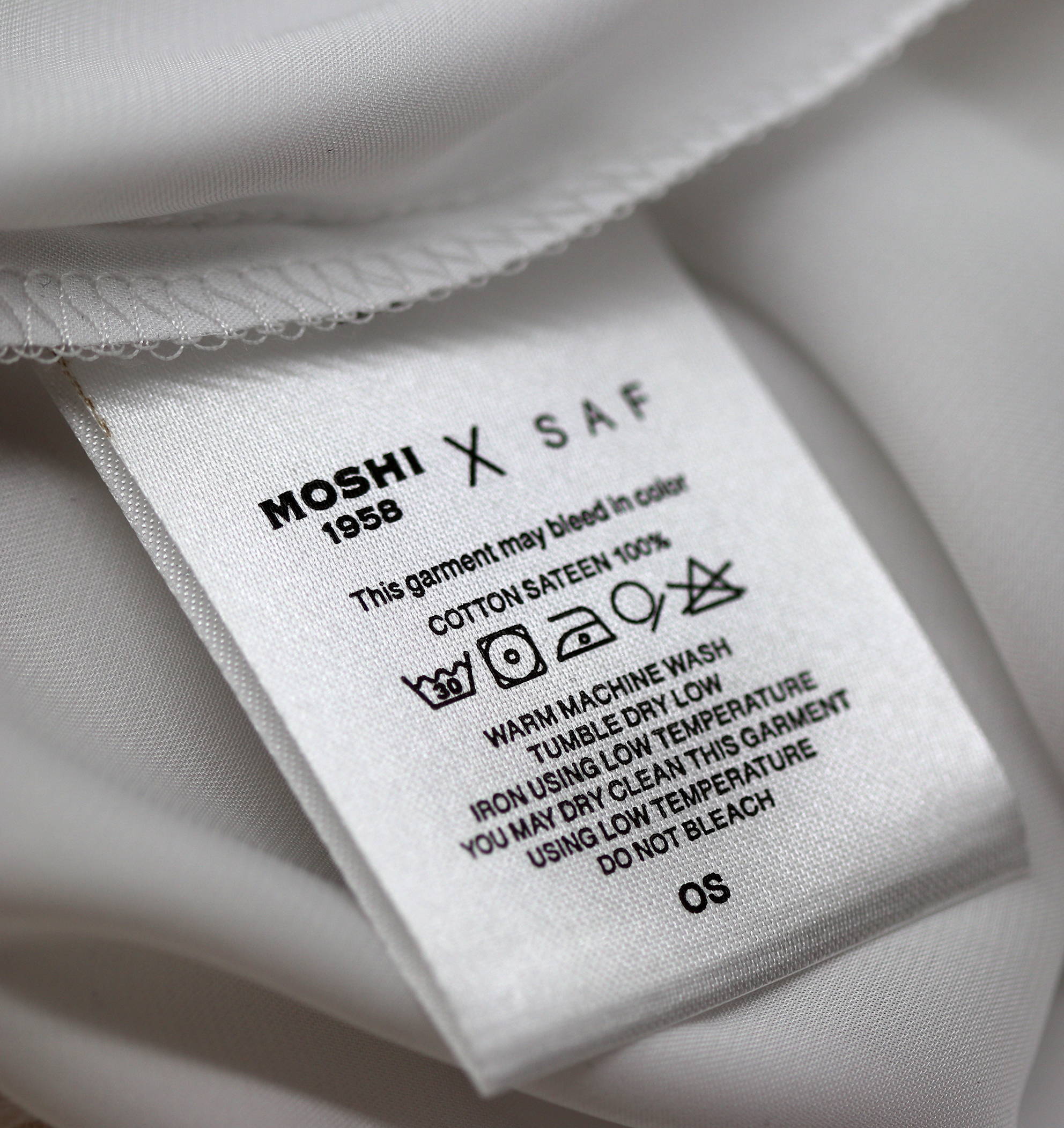When planning your garment label printing requirements, one of the critical decisions to make is selecting the right fabric.
Cotton Labels, polyester Labels, and taffeta are common options, each with its advantages and disadvantages
and suitability for different printing methods, which we will explore in this article.
COTTON LABELS
Cotton has been used in clothing manufacture for over 7,000 years. It's suitable for silk screen, flexo, digital inkjet, and pad printing.
The Pros:
1.Eco-Friendly: Cotton is entirely natural, organic, biodegradable, and renewable, making it an excellent choice for eco-conscious businesses and consumers.
2.Comfortable: Cotton is comfortable against the skin and is ideal for garments, especially for children and babies, as it doesn't cause irritation or discomfort.
3.Ink Durability: Ink on cotton labels does not fade or bleed, and brand and garment information can also be sewn on.
The Cons:
1.Limited Color Range:** Cotton has a limited color base, so manufacturers need to consider whether label color is essential.
2.Fraying:** 100 percent cotton labels can fray due to the softness of the fabric; a poly-cotton blend offers greater stability and durability.
3.Detailed Text:** Producing small, detailed text on cotton while maintaining high definition can be challenging.
POLYESTER LABELS
A synthetic fabric derived from petroleum, polyester is used in thousands of applications and is suitable for flexo, hot stamp, thermal transfer, and digital inkjet printing.
The Pros:
1.Detailed Printing: Polyester is excellent for detailed text, such as washing instructions.
2.Durability: It is durable, robust, and can withstand high temperatures, making it suitable for washable labels that won't fade or fray.
3.Variety of Options: Polyester comes in various combination fabrics, providing garment manufacturers with flexibility.
4.Skin-Friendly: It is soft to the touch and ideal for labels that will touch the skin.
5.Color Versatility: Polyester can be dyed any color for branding.
The Cons:
1.Production Time:** Polyester printing may require multiple finishing processes, leading to longer production times.
2.Skin Sensitivity:** In warm temperatures, polyester labels may stick to the user's skin, making them less suitable for certain garments.
TAFFETA LABELS
Taffeta is a crisp woven fabric often made from silk or synthetic textiles like polyester, acetate, or nylon. It can be printed using flexo, hot stamp, thermal transfer, and digital inkjet methods.
The Pros:
1.Cost-Efficient:** Taffeta is a low-cost ribbon used in budget-friendly garments to keep prices down..
2.Easy Manufacturing:** It is inexpensive to manufacture and easy to mass-produce.
3.Versatile Printing:** Taffeta can be printed on using various methods.
The Cons:
1. Breathability:** Taffeta is non-breathable and may stick to the skin in hot weather, making it unsuitable for skin-contact applications.
2. Appearance:** It has the appearance and texture of a lower-quality fabric and may not suit luxury brands.
3. Stiffness:** The edge of a taffeta label can be stiff, potentially causing itchiness or skin irritation.

When planning your garment label printing requirements, one of the critical decisions to make is selecting the right fabric.
Cotton Labels, polyester Labels, and taffeta are common options, each with its advantages and
disadvantages,and suitability for different printing methods,
which we will explore in this article.
For professional advice on all aspects of garment label printing, reach out to the experts at
SMALLABEL LTD.
Get in touch to find out more about the best fabric and printing options for your clothing labels.


